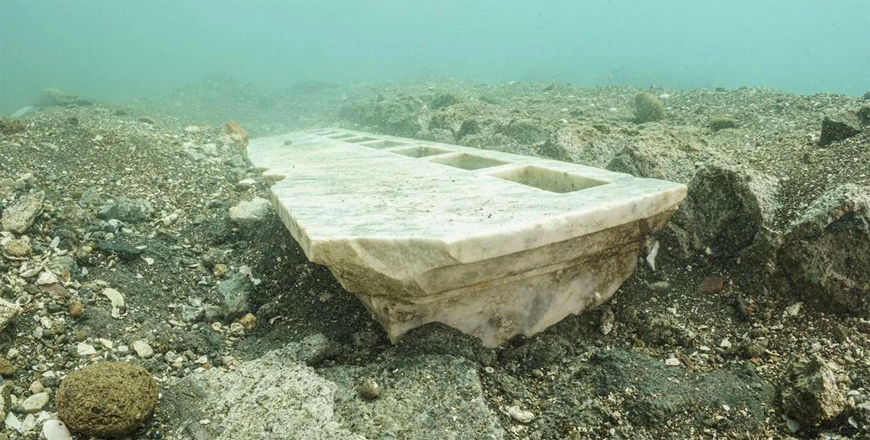AMMAN — Puteoli was a Roman city in the Bay of Naples and merchant hub. The group of Italian archaeologists specialised for submerged structures and underwater archaeology found remains of the Nabataean structures.
Michele Stefanile who is affiliated with the University of Naples, worked with his colleagues at Puteoli. His previous experience included works in Egnatia, Kaulonia and Adriatic fishponds.
"Three years ago, we established a cooperation agreement with the ministry of culture with the aim of mapping all the submerged archaeological area of Puteoli, the main commercial harbour of Rome in the Bay of Naples," Stefanile said.
He added that his team started with a complete coverage from the sky, using drones, and - with a first map of everything in our hands - starting diving in the area.
The Nabataean Kingdom had developed trade cooperation with different commercial hubs and Puteoli was no exception.
"We knew about the presence of a Nabataean temple in Puteoli: some Nabataean inscriptions and artefacts coming from the sea are exposed in the Museums of Naples and Baia, but nobody had the exact location of the temple," noted Stefanile, stressing that his team used the drone map as a guide in the underwater exploration.
"We had the possibility to identify the different areas of the submerged harbour, and to highlight few possible locations for the temple: in this way, after several dives, we arrived directly on the top of one of the altars," Stefanile underlined.
He added that thanks to the material preserved in the museums, and to their new discoveries, we know that the Nabataeans established a commercial basis in the harbour of Puteoli to protect their luxury trade with Rome.
"The Puteoli base, as far as we know, is the unique out of the Nabataean territory. They became incredibly rich, and Rome offered to them a peaceful possibility of trading during more than one century," the scholar said.
Only at the beginning of the second century AD, when Trajan decided to conquer Arabia and create the province of Arabia Petraea, the freedom of the Nabataeans was cancelled, he underlined.
At this point, the commercial basis became pointless and the Nabataeans in Puteoli disappeared. Their temple was not destroyed but covered in concrete, for the creation of new buildings, Stefanile said, adding that as archaeologists, they are now studying the chronology of all these moments.
"In the near future, we hope to dig the entire temple, in order to reach the original floor [for a temple covered in luxury Italian marble, we can imagine an amazing floor!], and to understand the aspect of the building: this is not easy underwater, but extremely important, because we really have very few parallels and it’s hard for us to imagine how a Nabataean temple in a Roman city looked like," Stefanile underscored.
